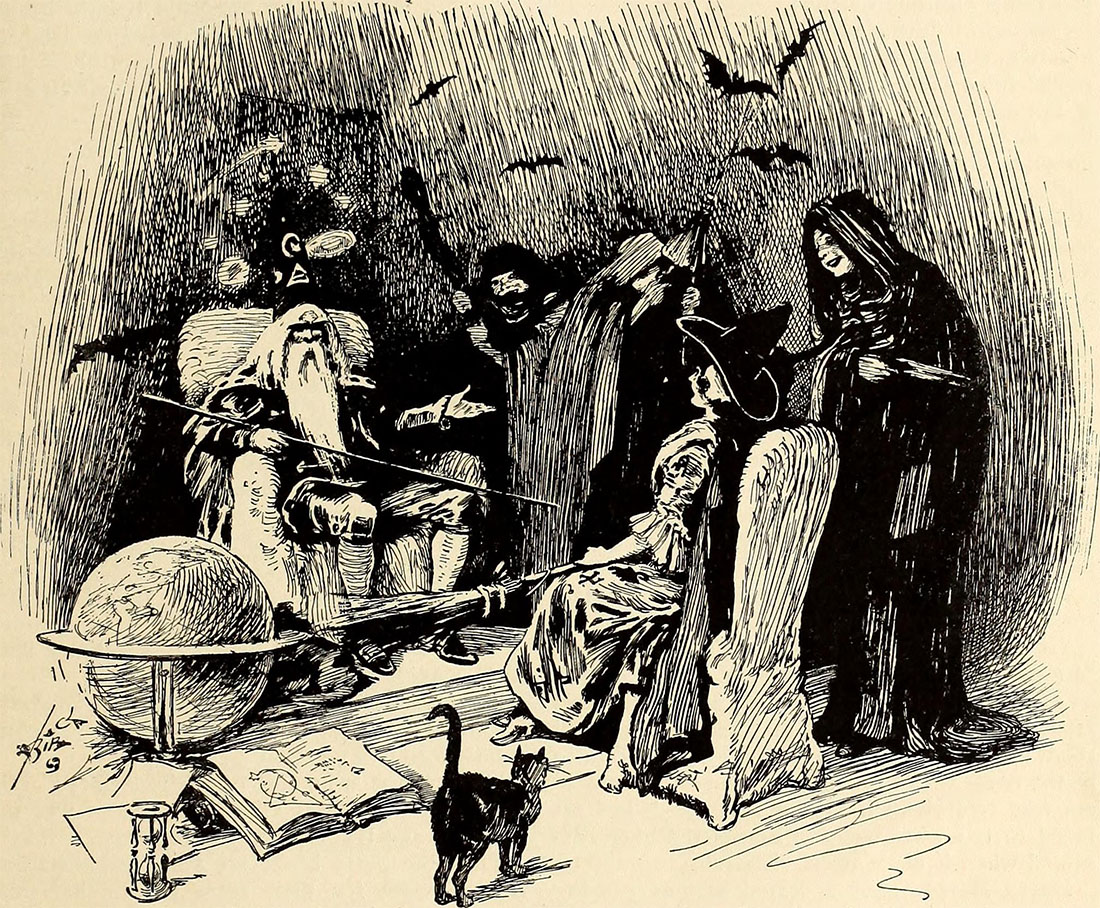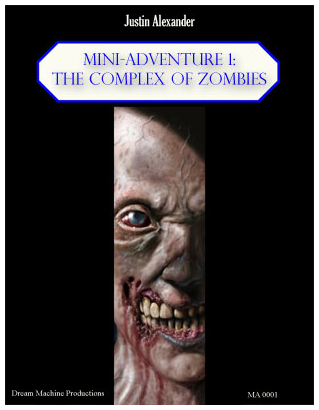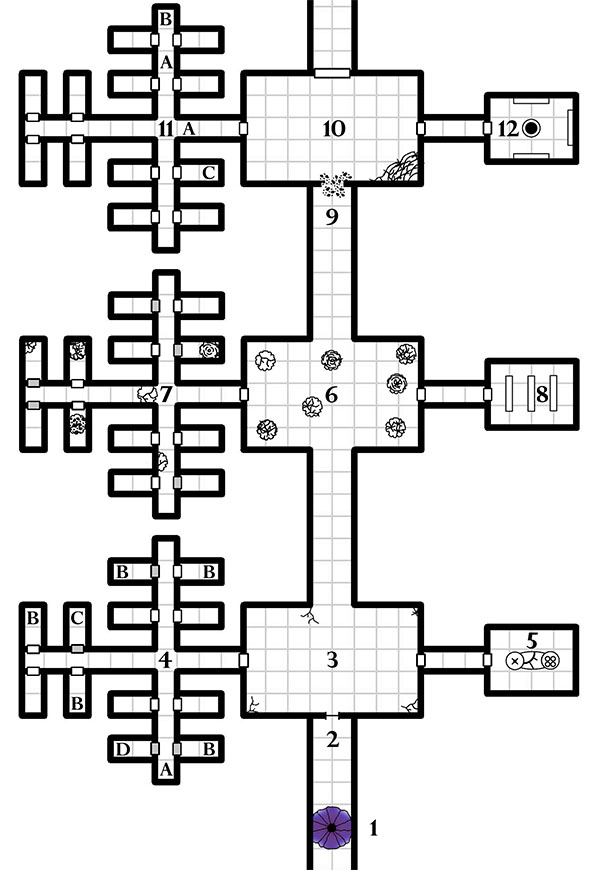
IN THE SHADOW OF THE SPIRE
SESSION 6B: RETURN TO THE DEPTHS
April 29th, 2007
The 21st Day of Amseyl in the 790th Year of the Seyrunian Dynasty
Elestra did, in fact, feel much better come the morning. The group felt that they would need more magical healing before their endeavor was complete, so they took the time to stop by Myraeth’s Oddities and pick up a partially spent wand of healing before heading back to Greyson House.
They found that the watchmen had left. In their place, the front door had been crudely boarded shut. Agnarr casually ripped the boards off the door, and the party headed back down into the dusty tunnels.
Agnarr carried Elestra across the pit of insanity, and the rest of the party crossed without incident. About two hundred feet further down, the tunnel abruptly ended in an open doorway. A brass frame in the shape of a door dangled useless from a broken hinge and old dusty shards of glass lay scattered on the ground.
Beyond the door there was a large chamber of the same cream-colored stone. Thick filigrees of dust and grime suggested long neglect and emptiness. Off to the left and the right there were sturdy iron doors. Across the chamber the hallway seemed to continue.
Testing the doors, they found one of them locked. Tee tried to pick the lock, but failed, so they decided to try the other door, which was unlocked. Opening it, however, they found nothing more than a short hallway with another door at the end of it.
Ranthir, meanwhile, noticed that the hinges for the first door were on this side of the door. He pointed this out to Tee and Tee was able to pull the hinges out. Then Agnarr stepped up and heaved the door to one side.
Behind the door they found a set of narrow, cramped hallways. There were many more of the sturdy iron doors.
Tee headed carefully into the area, keeping her eyes peeled for any sign of danger. Reaching an intersection she peered down another hallway and spotted a corpse near the end of it. She beckoned Agnarr to follow her closely and began making her way down towards the corpse.
About halfway down the hall, Tee suddenly started sweating profusely. She wiped the back of her hand across her forehead and, when she pulled it away, she was horrified to find it covered in blood. Looking down at her arms she could see that blood was literally oozing out of her pores. “Oh gods! Get out! Get out!”
Tee and Agnarr rushed back out of the cramped hallway into the larger room where the rest of the group was waiting. After a panicky description of what had happened, the group ascertained that Tee was no longer bleeding (although her clothes had become hopelessly stained). Agnarr had never been afflicted at all. Tee wondered if, perhaps, it was a curse which affected only those of elven blood. Agnarr decided to head back into the area and see if the corpse was, in fact, an elf as well.
But as Agnarr drew near the corpse he, too, found himself afflicted by the bloodsheen. He started to turn back towards the entrance, but as he did so the corpse suddenly lurched to its feat. In his booming voice, Agnarr cried out: “By the red elk!” He drew his sword.
The dry, gray skin of the corpse cracked open as something tore itself out from the inside, like a snake shedding its skin. It emerged as a glistening mass of raw muscle, pulsing with thick veins of crimson-black blood. Its fang-like teeth glittered as its mouth parted in a ghastly, hissing, guttural growl.
Agnarr retreated to the intersection and held his ground there. Tee, hearing his oath, rushed in as well, taking up a position behind him and using her longbow to shoot over his broad shoulders.
The undead monstrosity, pulling free from the dry husk of its former flesh, dashed down the hall at them. As it drew near, the bloodsheen returned – coating their flesh in a scarlet which gleamed in the flickering light of Agnarr’s sword. It made the barbarian’s grip on his sword slick, and he struggled to bring it to bear in the narrow quarters. Meanwhile, the monstrosity’s claws darted in again and again, raising hideous bleeding welts.
Elestra tried to work her way into a position where she could attack the creature too, but as she worked her way around the massive barbarian she inadvertently left her back open to the undead horror, which didn’t hesitate for a moment before tearing a huge, gaping gash across her back. She managed a single feeble and ineffective swing of her blade and then cried out in pain as her skin broke out with the bloodsheen and the wound on her back gushed a sudden torrent of blood. She fell to the floor, unconscious.
At that moment, a sudden pounding came at two of the doors behind Tee. She spun around and lowered her longbow as a desiccated corpse battered down one of the doors and shambled through it into the hallway. She fired true, but her arrow seemed to simply stick in the dead flesh of the creature.
Dominic, meanwhile, rushed in – hoping to heal Elestra and Agnarr. But the bloodsheen took him and weakened him and he was forced to turn back.
Ranthir fired bolts of eldritch might at the first creature. These had some effect, but did not seem to dissuade it. But Ranthir, in studying the creature, saw now that its wounds were visibly healing themselves.
Tee fired another arrow at the second creature. This seemed to knock it back a step, but still had little effect. So she dropped her bow and drew her dragon-hilted longsword. A tense battle between steel and claw ensued, while at her back Agnarr bled from wound after wound after wound.
With Elestra bleeding to death, Tee struggling, and Agnarr becoming weaker with every passing moment, it seemed that flight was the only possibility. Dominic stepped as close as he dared and called upon the might of his god to drive back the foul abominations. He repeated his call to the Father and raised his holy symbol high, but the creatures still fought in a frenzy.
Agnarr, trying to clear a clean path of escape for Tee, attempted to physically push his foe back down the hallway… but a claw snapped out and left a gaping wound in the side of his neck. He stepped forward again and, this time, managed to force it back a step – but he earned another grievous wound to the opposite side of his neck in payment for it.
At that very moment, Dominic’s holy strength found some meager purchase: The desiccated corpse clawing at Tee turned in sudden terror and fled. Tee, seizing the opportunity, plunged her sword deep into its exposed back. It jerked and then collapsed into a cloud of dust.
Tee cried out in joy. Agnarr turned to see what was happening… and left himself perilously open as he did. The creature’s claw found a crease in his sturdy leather armor and dug deep. The sheer force of the blow slammed Agnarr into a corner of the wall, and when the claw ripped free it was followed by a gout of blood. Agnarr fell to his knees and then collapsed.
Tee, badly wounded herself, fled for her life. She raced through the outer chamber and back into the long hall.
Ranthir was out the door before her, but Dominic – the words of his holy invocation still echoing on his lips – was laggard in his escape. The undead thing, bursting into the chamber on Tee’s heels, saw the seemingly defenseless priest and rushed straight at him. Its razor-like claw lashed out, punching deep into the priest’s stomach.
Blood bubbled to Dominic’s lips, but there was a strength deep in the priest’s frail frame – a strength born of his god perhaps. He smiled through the pain – a sickly grimace – and the words of his prayer grew loud again. He grasped the forearm of the creature – still buried in his stomach – with one hand and held it tight as he reached out with the other…
A single burst of holy light and it was done. The creature crumbled back into the dust from whence it had come and to which it now rightfully returned.
Dominic sagged to one knee. His hand closed over his ghastly wound and, with a gentle wave of holy energy, sealed it. Then he was quickly back on his feet and rushing down the hall to where Elestra and Agnarr lay.
Agnarr was still breathing, although his breaths were shallow and rasping. Elestra’s wounds, however, had bled her dry and her breathing had stopped for the second time in as many days. Dominic quickly spent the last of his holy strength on Elestra, barely managing to restore the breath of life to her. As she awoke, he used the wand they had purchased from Myraeth to awake Agnarr.
The pounding of fists upon iron was still echoing through the narrow halls. Something was trying to beat its way out to them. So, with Elestra’s condition hopefully stabilized, the group fled as quickly as they could back into the ancient passage and across the pit of insanity. Ranthir made sure to grab the boards which spanned the pit and pulled them across to their side.
REST AND RECUPERATION
The party was in a sorry state: The wound on Elestra’s back still ached and oozed. The two deep wounds on either side of Agnarr’s neck were still more than apparent. All of them had bled profusely from their pores, leaving their clothes grotesquely stained (except for Dominic whose holy vestments apparently shunned the filth) and their skin coated in coagulating gunk.
Despite their condition, they dragged themselves across town – attracting more than a few disdainful stares as they went. When they returned to the Ghostly Minstrel, Tellith took one look at them and shooed them back outside while she fetched some buckets of water to wash the worst of the filfth off them. There was, in fact, a specially designed trough to one side of the building which sloughed the water away.
“You can never be too prepared,” Tellith said and smiled.
“Does this happen often?” Tee asked.
“More often than my mop can bear,” Tellith replied.
When Tellith was satisfied, the party headed upstairs and gave themselves a thorough and proper cleaning.
When they reconvened in Elestra’s quarters, Dominic gave their injuries a thorough examination. He concluded that his gift of holy energy from Athor the Father would be strong enough the next day to rid them of their injuries, but only barely. As such, they would wait until the day after to journey back down to the ancient complex they had discovered.
Ranthir decided to spend the afternoon at the Delver’s Guild Library to see if he could find any reference to the blood-drenched creatures they had faced. (Perhaps they had some weakness.)
Ranthir had little luck in his research, but the rest of the party tried a different tack: They headed down to the Delver’s Guild office in the Undercity Market.
As they entered, Gorti Jurgen greeted them with a big smile. Agnarr quickly spoke up, “Do you know anything about undead who cause you to bleed from your pores?”
Gorti’s eyes grew wide, “Oh no… I don’t know anything about that.”
“Do you know anyone who would?”
“Not exactly. You should check at the library.”
“We’ve got a man on the job there already.” Agnarr looked around and tried to spot somebody with the air of experience to them. He saw a muscular, bald fellow leaning against the wall. The man had a scar which ran from his right temple down through a milky eye to his jowls. Agnarr strode over to him.
The man eyed him up and down as he came and grunted. “What do you want, barbarian?”
“Do you know anything about creatures like this?”
The man shrugged. “They sound like undead who cause you to bleed from your pores.”
“Exactly!” Agnarr jubilantly walked out.
While Agnarr had become the center of attention, Tee idly scanned the postings on the wall. She noticed that, in addition to the usual postings about equipment for sale and wanted expertise, there were several pro-Republican and several anti-Republican flyers posted as well. Once Agnarr was gone, she went over to the scarred man and asked him if he did, in fact, know anything. He didn’t.
They came up out of the Undercity Market and headed over to the Ghostly Minstrel. Agnarr had already hit the bar, hoping to soothe the ache from his wounds with a few women and a lot of alcohol.
A letter had arrived for Elestra. It was from Iltumar Shon and written in a crude hand:
Mistress Elestra—
I think I have a riddle to match your skill:
Oft I must strive with wind and wave.
They wish to capture what I must keep;
But in lying still am I strong in strife.
I can master them both if my grip holds out;
If the rocks bring succor and lend support.
Iltumar
Elestra was too tired to truly puzzle over the verse. Folding the letter carefully, she headed up to bed. The others soon followed her.
NEXT JOURNAL ENTRY
 Wizardesses, and Assorted Practitioners of the Magical Arts.
Wizardesses, and Assorted Practitioners of the Magical Arts.



















